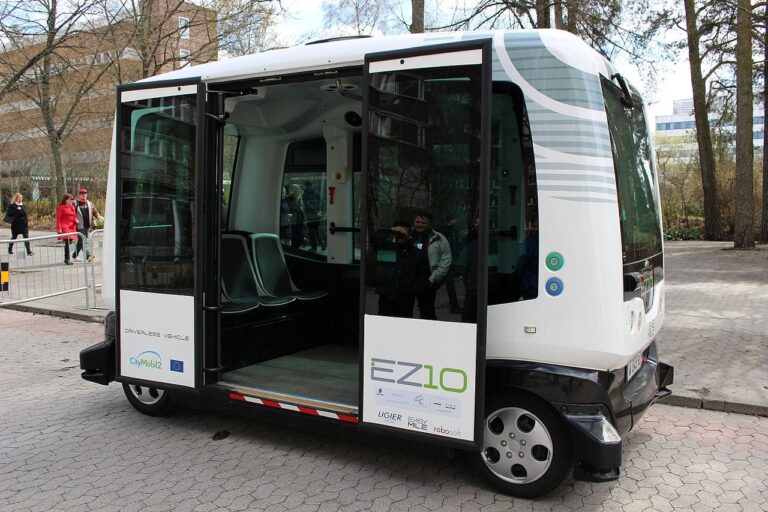A large proportion of traffic accidents can be attributed, in part, to errors made by human drivers. Autonomous vehicles can provide increased safety and efficiency, as well as decreased running costs to the user. However, laws have often halted any large scale, major pilot tests. In Helsinki, Finland, a small idiosyncrasy in the law has allowed the city to be one of first to trial robotic busses. As there is no legally binding law that states that a vehicle must have a human driver, Helsinki welcomed the introduction of two electric powered robot shuttle EZ10 busses in August 2016.
The busses are produced by a French, high-tech company called EasyMile, who specialise in last mile mobility solutions and software for autonomous vehicles. The robot bus trail was then also extended to the Finnish cities of Espoo and Tampere, where they are currently being run between the Tampere University of Technology and Hervantakeskus shopping centre.
In Finland, these busses are used as a smart last-mile solution and are aimed at supplement and improve people’s routes to and from their homes. The EZ10 busses, which are able to accommodate up to 12 people, therefore act as a connecting service, getting commuters to their next bus or metro train in time. The end goal of these pilot tests in Finland is to narrow in on the best city traffic solutions rather than replace existing means of public transport. This does, however, play well with Finland’s goals to make owning a car pointless with hopes for a fully competent mobility-on-demand system by 2025.
Finland is not the only country to be experimenting with robot busses- The Netherlands has also trailed its first self-driving electric shuttle. Named the WEpod, the autonomous shuttle bus operates between Ede-Wageningen railway station and Wageningen University, as well as on the university campus.
What sets these autonomous vehicles aside from the Heathrow Pods, the ParkShuttle bus in Rotterdam and LUTZ Pathfinder in Milton Keynes – which are also autonomous- is that these robotic shuttle busses can drive on regular roads, incorporating themselves in with existing public traffic.





